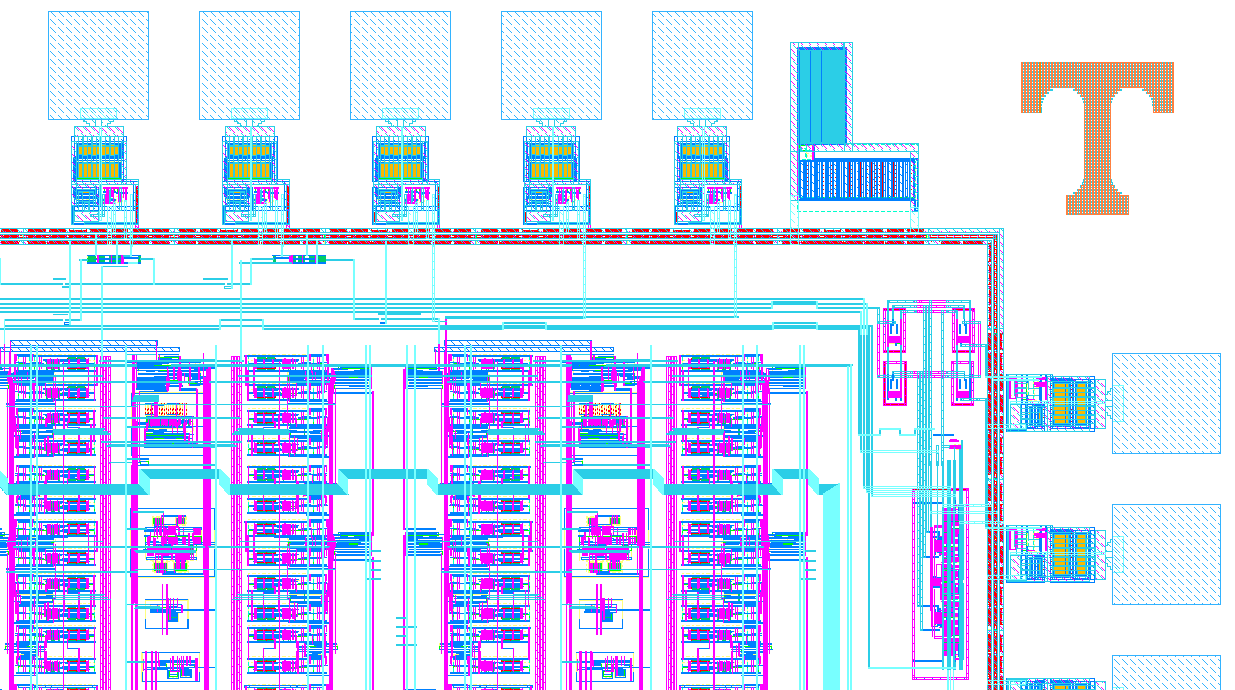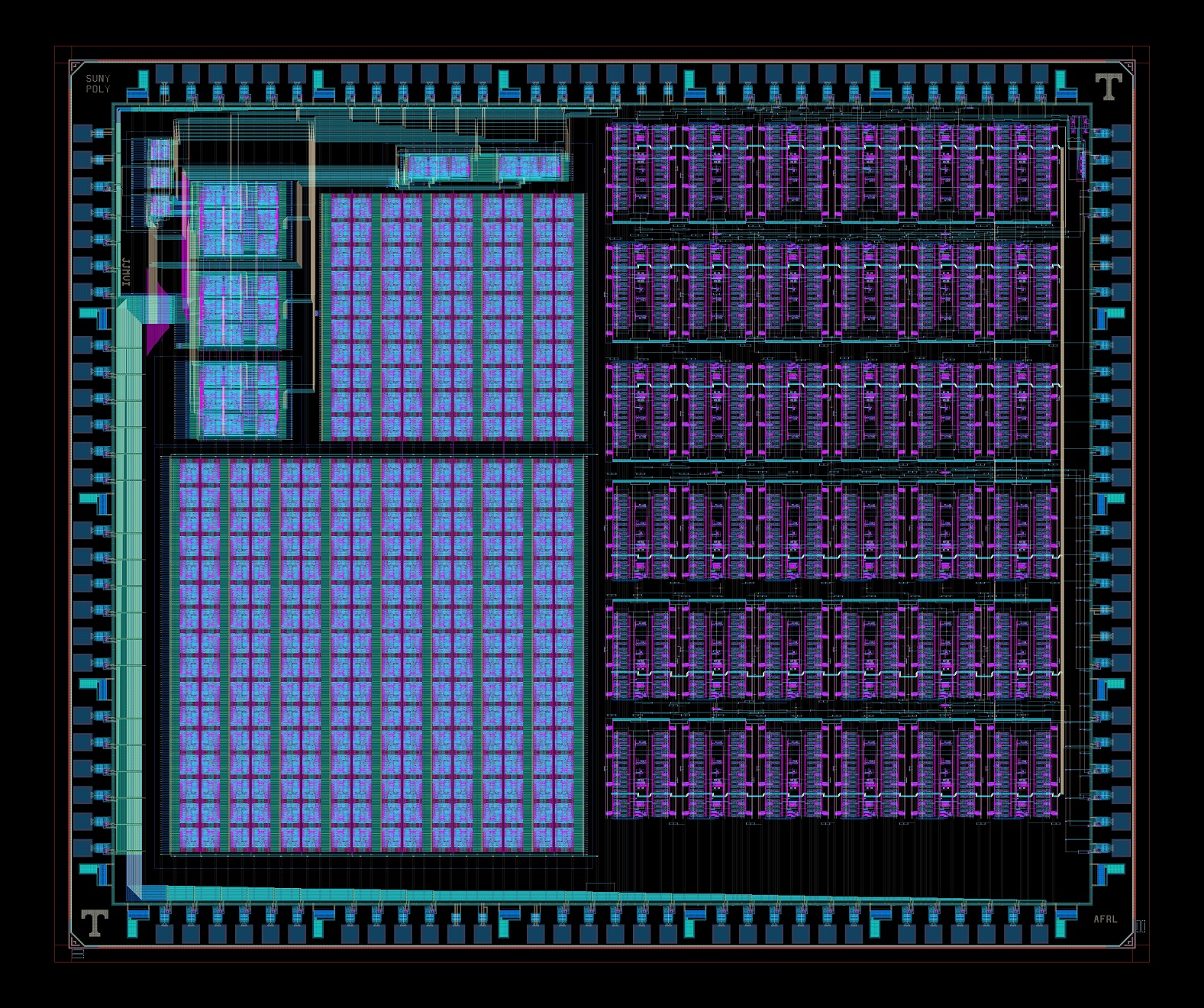Neuromorphic Computing Hardware Design
A "natural" candidate for emerging computer architectures is the concept of neuromorphic systems or computational networks constructed from neural networks. Neuromorphic computer architectures are inspired by biology in that their operation is based on our best understanding of the functionality of the mammalian brain. While artificial neural networks can be constructed from conventional electronic devices such as transistors, emerging nanoscale devices (e.g. memristors) exhibit properties particularly well suited for building high density, power-efficient neuromorphic systems. As part of our research, we are exploring how memristive devices can be exploited as synaptic elements in complex neural networks. This approach of "memristors as synapses" has been applied to several neuromorphic architectures, including brain-state-in-a-box (BSB) and popular Hopfield networks. Furthermore, in contrast to most silicon based reconfigurable devices, neuromorphic systems learn or are trained in much the same way as animals must learn. To this end, we are also engaged in the exploration of training methods for the memristor-based neuromorphic systems we design.

